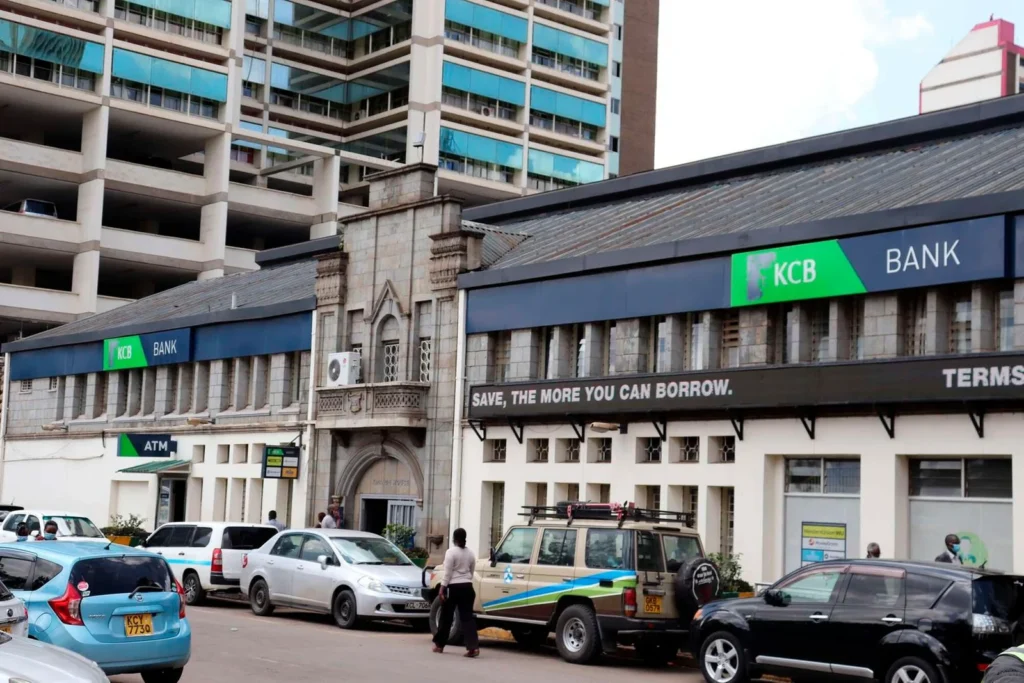
What It Means for Borrowers and the Economy
KCB Bank Kenya has announced a reduction in its base lending rate to 14.6%, a 1% drop from its previous 15.6%. The decision aligns with the Central Bank of Kenya’s (CBK) push to make credit more affordable and foster economic recovery. This move is expected to positively impact borrowers and the economy, setting a precedent for other banks in Kenya to lower their rates.
Why KCB’s Rate Cut Matters
Interest rates significantly impact borrowing and spending behaviors. When interest rates are high, borrowing becomes expensive, often leading to decreased economic activity. Recognizing this, KCB Bank Kenya’s move to lower its base lending rate by 1% is not just a boon for borrowers but a key step toward aligning with the CBK’s goal of stimulating growth.
Understanding Base Lending Rates and Their Impact
The base lending rate is the minimum interest rate that banks charge on loans. Changes to this rate influence the cost of credit across the board, from personal loans to mortgages and business financing.
When banks lower their lending rates, borrowers generally experience:
- Reduced Loan Costs: Lower monthly repayments and overall interest expenses.
- Increased Borrowing Opportunities: Easier access to credit for businesses and individuals.
- Stimulated Economic Activity: Encourages spending and investment.
KCB’s move to reduce its lending rate by 1% is a direct response to the Central Bank of Kenya’s adjustments in monetary policy, which aim to make credit more accessible amid economic recovery efforts.
KCB’s Decision: A Closer Look
Effective February 10, 2025, KCB Bank Kenya reduced its base lending rate from 15.6% to 14.6%. This decision follows the CBK’s recent move to cut its benchmark lending rate to 10.75% from 11.25%. The CBK also reduced the cash reserve ratio (CRR) from 4.25% to 3.25%, unlocking KES 73.7 billion into the economy.
The move is part of a broader effort by the CBK to encourage commercial banks to lower their interest rates and align with policies that support affordable credit and economic recovery.
Why Now?
- Economic Recovery Post-COVID-19: Many sectors, including trade, manufacturing, and real estate, are still recovering from the economic shock of the pandemic.
- Non-Performing Loans (NPLs): High interest rates have contributed to rising NPLs, and lowering rates could help borrowers better manage repayments.
- Private Sector Credit Growth: Private sector credit growth hit a 22-year low in late 2024 due to expensive loans. Reducing rates can reverse this trend.
What This Means for Borrowers
Borrowers will benefit significantly from the lower base lending rate. Here’s how:
1. Lower Repayment Costs
A 1% reduction may seem small, but it makes a substantial difference in repayment costs over time. For instance:
- A borrower with a KES 1 million loan over 5 years will save thousands in interest.
- Small businesses relying on credit to expand can now access cheaper loans.
2. Improved Access to Credit
With rates now at 14.6%, more borrowers, especially small businesses and individuals, may qualify for loans they previously couldn’t afford.
3. Positive Ripple Effects on the Economy
- Increased Investment: Businesses can invest in growth without the burden of high borrowing costs.
- Job Creation: As businesses grow, they can hire more employees, reducing unemployment.
- Higher Consumer Spending: Lower interest rates mean more disposable income, boosting consumer spending.
KCB’s Role as a Market Leader
As one of Kenya’s largest banks, KCB’s decisions often set the tone for the banking industry. By lowering its base rate, KCB is leading the way for other banks to follow suit.
Competitor Response
Other major banks, such as Equity Bank and Cooperative Bank, are now under pressure to adjust their rates to remain competitive. Borrowers are likely to favor banks with the most favorable lending terms, making rate adjustments critical for customer retention.
Comparison to Historical Trends
This is not the first time KCB Bank Kenya has adjusted its lending rate in response to monetary policy changes. In May 2024, the bank increased its rate from 14.7% to 15.6%, following a benchmark rate hike by the CBK to 13%.
The current reduction reflects a shift in policy from tightening to easing, aimed at stimulating economic activity.
The Role of the Central Bank of Kenya
The CBK has been instrumental in influencing interest rates across the banking sector. By lowering the benchmark rate and CRR, the CBK has created conditions for banks to reduce lending rates.
CBK’s Enforcement Measures
Despite policy adjustments, some banks have been slow to lower their rates. The CBK has initiated inspections to ensure compliance and warned of penalties for non-compliant banks.
Implications for the Kenyan Economy
The reduction in KCB’s lending rate is expected to have far-reaching implications:
- Support for SMEs
Small and Medium Enterprises (SMEs), which form the backbone of Kenya’s economy, stand to benefit the most. Cheaper loans mean more capital for expansion. - Boost to Real Estate
The real estate sector, burdened by high borrowing costs, is likely to experience renewed growth as developers access more affordable credit. - Reduction in Non-Performing Loans
Lower rates make it easier for borrowers to repay their loans, potentially reducing the proportion of non-performing loans in the banking sector.
What Borrowers Should Do
If you are a borrower or plan to take a loan, here are some steps to take advantage of the new rates:
- Review Your Current Loans: Consult your bank to determine if your existing loans qualify for the reduced rate.
- Negotiate New Terms: Use the rate reduction as leverage to negotiate better terms for future loans.
- Plan for Long-Term Investments: Lower rates make this a good time to consider investments such as real estate or expanding your business.
Read: Stolen KRA Revenue Stamps: Battle Against Counterfeit Goods
KCB Bank Kenya decision to lower its base lending rate to 14.6% is a pivotal moment for borrowers and the Kenyan economy. By aligning with the CBK’s monetary policy, KCB is making credit more affordable and accessible, fostering economic growth and stability.
Borrowers should take this opportunity to explore how the new rates can benefit them, whether through refinancing existing loans or accessing new credit for personal or business growth.
As KCB leads the charge, the expectation is that other banks will follow, creating a more favorable lending environment for all Kenyans.
Frequently Asked Questions (FAQs)
What is a base lending rate?
The base lending rate is the minimum interest rate banks charge borrowers for loans. It serves as a benchmark for calculating interest rates on various credit products. Changes in this rate directly affect the cost of borrowing.
Why did KCB Bank Kenya reduce its base lending rate?
KCB reduced its base lending rate to align with the Central Bank of Kenya’s monetary policy, which aims to lower the cost of credit and stimulate economic recovery. The decision also follows the CBK’s move to cut its benchmark rate and cash reserve ratio.
How does a lower lending rate benefit borrowers?
A lower lending rate reduces the overall cost of loans, making monthly repayments more affordable. It also increases access to credit, enabling individuals and businesses to borrow more easily for personal or business needs.
Will existing loans automatically benefit from the reduced rate?
Not always. Borrowers should check with KCB Bank to determine if their current loans qualify for the reduced rate. Some loans may require renegotiation or refinancing to benefit from the new rate.
How does this rate cut affect small businesses?
Small businesses benefit significantly as they can access cheaper loans for expansion, manage cash flow better, and reduce operational costs, ultimately fostering growth.
How does the CBK influence interest rates in Kenya?
The CBK sets the benchmark interest rate and cash reserve ratio, which affect the liquidity and borrowing costs for commercial banks. By adjusting these rates, the CBK indirectly influences lending rates across the banking sector.
How does the new base rate compare to other banks in Kenya?
KCB’s new base rate of 14.6% is competitive. However, other banks may follow suit, so borrowers should compare rates across banks to find the best terms.
What sectors are most likely to benefit from the rate reduction?
Sectors such as real estate, manufacturing, trade, and Small and Medium Enterprises (SMEs) are expected to benefit the most due to increased access to affordable credit.
Can borrowers negotiate for even lower rates?
Yes, borrowers can negotiate for better terms, especially if they have a good credit history or significant collateral. Engaging with loan officers at KCB or other banks can help secure more favorable terms.
How will this move impact Kenya’s economy?
Lower lending rates are expected to stimulate economic activity by increasing borrowing, encouraging investment, boosting consumer spending, and reducing non-performing loans. This will foster overall economic growth and recovery.
Will all banks in Kenya reduce their lending rates?
While not all banks are obligated to reduce rates, KCB’s decision sets a precedent that other banks are likely to follow to remain competitive in the market.
How should borrowers prepare for the reduced rates?
Borrowers should review their financial goals, assess current and potential loans, and consult their banks for guidance on how to take advantage of the new rates. Planning for long-term investments is also advisable.
How does the reduction affect non-performing loans (NPLs)?
Lower rates make loan repayments more manageable for borrowers, potentially reducing the rate of non-performing loans in the banking sector.
Is this rate cut permanent?
The lending rate is subject to change based on economic conditions and monetary policy adjustments by the CBK. Borrowers should monitor announcements from KCB and the CBK for updates.





